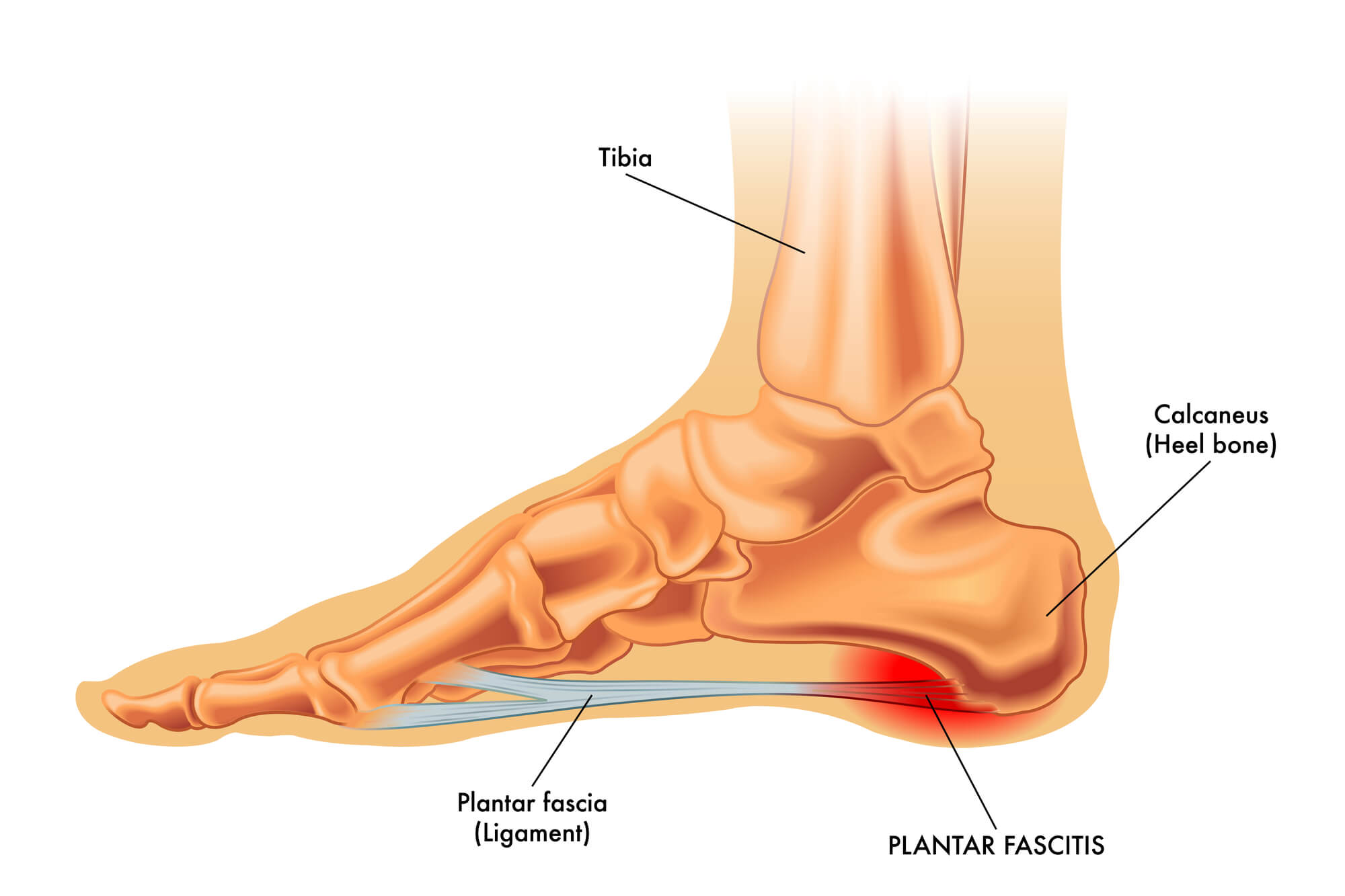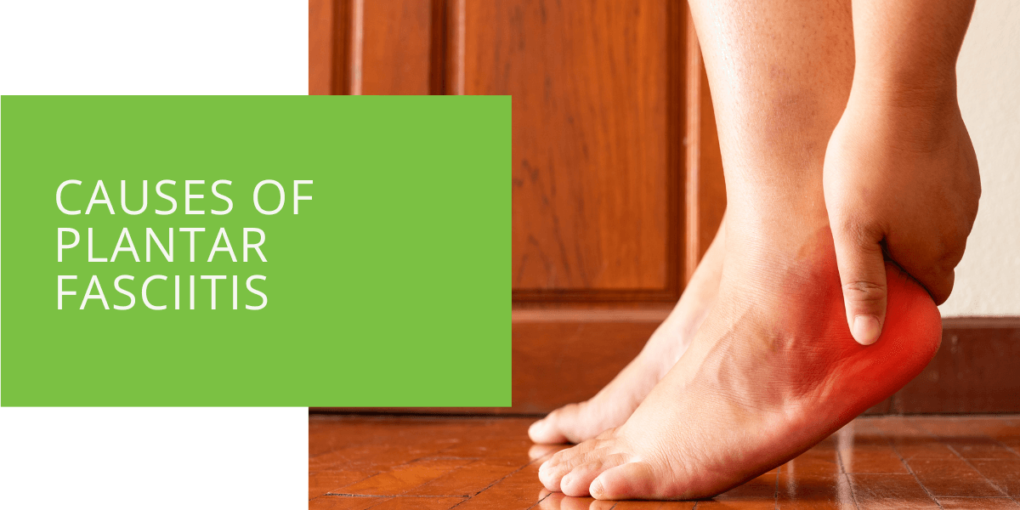Understanding the Causes of Plantar Fasciitis
Are you experiencing heel pain? If so, you may suffer from plantar fasciitis, one of the most common causes of heel pain. The plantar fascia is a thick, fibrous band of tissue that runs along the bottom of your foot and connects your heel bone to your toes. When this tissue becomes inflamed or overstretched, it can cause significant discomfort, making it difficult to walk or stand for extended periods.
This article will explore the common causes of plantar fasciitis, including excessive foot pronation, overuse, obesity, and improper footwear. We will also discuss preventative measures and treatment options to help you alleviate your heel pain.
Anatomy of the Foot
To understand the causes of plantar fasciitis, it's important to understand the foot's structure. The foot arch is made up of three bones held together by ligaments and muscles. The plantar fascia is a thick band of tissue that connects the heel bone to the toes and helps support the foot arch.
The Achilles tendon is a thick tissue cord connecting the calf muscle to the heel bone. This tendon plays a crucial role in foot and ankle movement. When the Achilles tendon is tight or overstretched, it can put additional strain on the plantar fascia, leading to inflammation and pain.
Common Causes of Plantar Fasciitis
Excessive Foot Pronation
Foot pronation occurs when the foot rolls inward too much while walking or running. This can stress the plantar fascia significantly, leading to inflammation and pain. People with flat feet or a low arch are more prone to excessive foot pronation.
To treat excessive foot pronation, a podiatrist may recommend orthotics and custom-made shoe inserts that support the foot's arch. Stretching exercises and wearing proper footwear can also help alleviate symptoms.

Overuse
Overuse is another common cause of plantar fasciitis. People who engage in high-impact activities like running or jumping are more prone to developing this condition. Overuse can cause small tears in the plantar fascia, leading to inflammation and pain.
To treat overuse, it's important to rest and avoid activities that put additional strain on the foot. Stretching exercises and physical therapy can also help alleviate symptoms. In severe cases, a podiatrist may recommend wearing a splint or brace to help support the foot while it heals.
Obesity
Being overweight can stress the feet significantly and cause additional strain on the plantar fascia. This can lead to inflammation and pain. Losing weight and wearing proper footwear can help alleviate symptoms.
Footwear
Wearing improper footwear can also contribute to the development of plantar fasciitis. Shoes that are too tight or lack proper arch support can put additional stress on the plantar fascia, leading to inflammation and pain.
To prevent plantar fasciitis, it's important to wear shoes that fit properly and provide adequate support to the foot's arch. Avoid wearing high heels or shoes with a thin soles, as these can cause additional strain on the plantar fascia.

Other Contributing Factors
In addition to the common causes listed above, several other factors can contribute to the development of plantar fasciitis.
Age
Plantar fasciitis is more common in people between 40 and 60. The plantar fascia can become weaker and less flexible as we age, making it more susceptible to inflammation and injury. Older adults may also have other medical conditions that can contribute to the development of plantar fasciitis, such as arthritis or diabetes.
Certain Types of Exercise
Activities that stress the feet significantly, such as running or jumping, can increase the risk of developing plantar fasciitis. However, certain types of exercise, such as ballet or gymnastics, can also contribute to the developing of this condition. These activities often require repetitive movements that stress the foot, leading to inflammation and pain.
Occupational Risk Factors
People who stand or walk for extended periods as part of their job, such as factory workers, nurses, or teachers, are more prone to developing plantar fasciitis. These occupations require prolonged standing or walking, which puts significant stress on the feet and can lead to inflammation and injury.
Genetics
People with a family history of plantar fasciitis are likelier to develop the condition. This suggests that genetics may play a role in the development of this condition. Researchers are still exploring the genetic factors that contribute to plantar fasciitis, but it is believed that certain genes may make some people more susceptible to inflammation and injury.
Other Medical Conditions
Certain medical conditions, such as arthritis or diabetes, can also increase the risk of developing plantar fasciitis. Arthritis can cause inflammation throughout the body, including the plantar fascia, while diabetes can damage the nerves in the feet, making it more difficult to feel pain or discomfort.

Prevention and Treatment Options
Prevention is key when it comes to plantar fasciitis. Here are some tips to help prevent this condition:
- Wear shoes that fit properly and provide adequate arch support.
- Avoid wearing high heels or shoes with a thin soles.
- Stretch your feet and calf muscles regularly, especially before exercising.
- Maintain a healthy weight to reduce stress on the feet.
If you are already experiencing symptoms of plantar fasciitis, here are some treatment options:
- Rest and avoid activities that put additional strain on the foot.
- Apply ice to the affected area to reduce inflammation.
- Take over-the-counter pain medication, such as ibuprofen or acetaminophen.
- Wear shoes with proper arch support or custom-made orthotics.
- Physical therapy or stretching exercises to help alleviate symptoms.
- A podiatrist may recommend corticosteroid injections or surgery to remove a heel spur in severe cases.
Conclusion
Plantar fasciitis can be debilitating, causing significant discomfort and making it difficult to perform daily activities. Understanding the common causes and taking preventative measures can reduce your risk of developing this condition. If you are experiencing symptoms of plantar fasciitis, it's important to seek professional medical advice and follow the appropriate treatment plan. With the proper care and attention, you can alleviate your heel pain and return to doing what you love.

